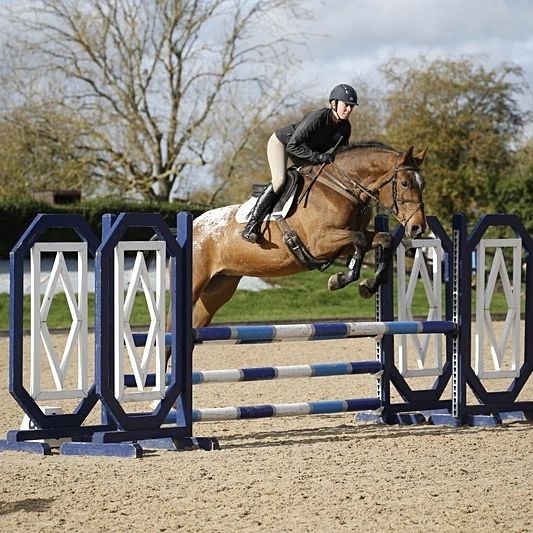
Horse and human - coaching parallels
This month, we’ve been reflecting on Nicki’s lifelong passion for horses, which started as a hobby, flowed into her work, and has been picked up by her family. It is no coincidence that we sponsor a high-level event rider, Ginny Howe. We have followed her career for the past 12 years, including the incredible highs and devastating lows that come with the sport. Ginny’s depth of experience with these intelligent animals reveals that there are many parallels between how you approach training horses and ‘the Juniper way’ of coaching. What are the important factors when teaching others, and what can we learn from an equine training approach?
First and foremost, you need to define your goals. Are they clear, and voiced? Each member of your team should be conscious of the organisation’s vision, or at the very least, have a clear idea of why they are doing their work and the overall purpose. When your team has a defined understanding of the company direction, each can align their role within the team to the overall objective, be more confident in their tasks, and make better and more independent decisions. Equally, Ginny says, “If you set out a clear training plan with overall goals and milestones for your horse, you, and your wider team who ride and care for him, can support the process from a position of knowledge. You will know not only the results you are achieving, but how you are getting there, and be able to adjust your training and competition schedule accordingly”.
Good communication is key. “Salesforce research found that employees who feel their voice is heard at work are 4.6 times more likely to be empowered to do their best work.” (Source: Forbes article). Encouraging open communication among employees will create an atmosphere of teamwork and collaboration, plus lead to greater understanding and trust. For example, if some team members work from home, try to have regular video calls and ‘team time’ without a strict agenda to tap into the valuable face-to-face contact time.
Communicating with horses is another language entirely! Ginny reminds us that equines understand our tone of voice, but not the words themselves. She says, “Focussing on consistent and positive intonation will help your charge to confidently appreciate what you want him to do, leading to a stronger relationship and trust between horse and rider.”
Give skills and confidence with a structured approach that outlines a learning strategy, from which you commit to outcomes and at the end of the process, reflect on the journey and the learning. A coach can support, challenge, and encourage an individual to recognise their need to work on certain skills, resolve a particular work issue, or focus on their personal development. Mentorship is slightly different and comes from one experienced colleague using their knowledge and understanding of the role and workplace to help fill the learning gap of, for example, a colleague who has just been promoted to a new role. Ginny confirms that similarly, horses need routine and consistency in their training, with enough variety and questions to help them build their strength, skills, and confidence, for example, to learn more complex dressage movements or jumping combinations. They also need breaks in their training, to consolidate their learning and to mature.
Diversity. We are each of us unique in our upbringing, experience, and approach to work and life, bringing different assets to the table. The diverse world we live in also needs to be factored into our learning, to ensure that no one is marginalised and that all teaching is as inclusive as possible, considering different cultures and backgrounds. If you celebrate diversity and commonality in the workplace and consciously play to each person’s strengths, everyone gains. Equally, all horses are different and accordingly, must each have a personalised programme of learning suited to their ability, their current level of training and their temperament.
Wellbeing. Don’t overlook the importance of wellness as part of the training journey. Learning needs to be engaging and appealing to resonate with participants and requires great observation and communication skills from the trainer for the trainee to get the most out of the teaching. Change can be uncomfortable, as the skilled trainer encourages the learner to do things differently and do different things. When the process is managed properly, the journey can lead to a stronger sense of purpose and motivation. Comparable to this, Ginny explains that good horsemanship means a focus on the horse’s well-being too. Don’t push the learning too far and holidays are a must (for humans too!). Young horses need to rest and be turned out in the winter to cement their learning and come back fresh in the spring.
At Juniper, we cherish our special connection with horses and our longstanding relationship with Ginny, who as a respected trainer and successful competitor, encourages us to see a different perspective. By setting a few individualised learning and development goals for everyone on our team, we too create our formula for success.
Photography by Alison Parker